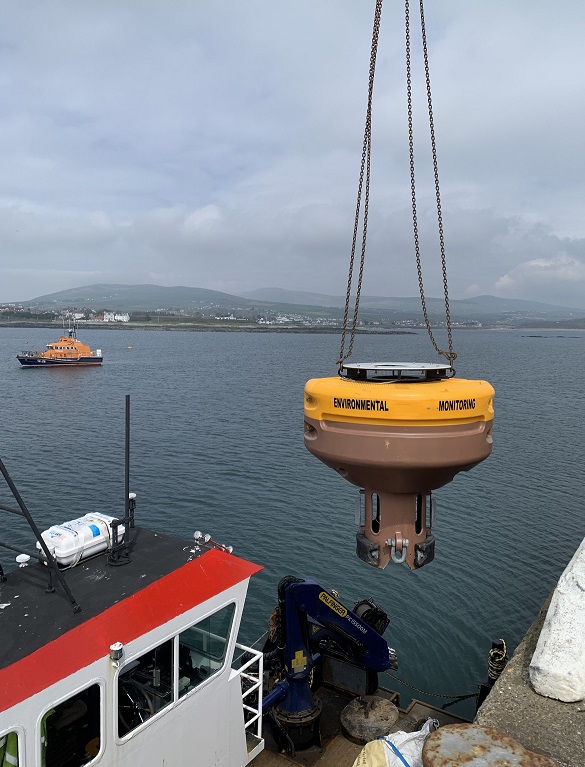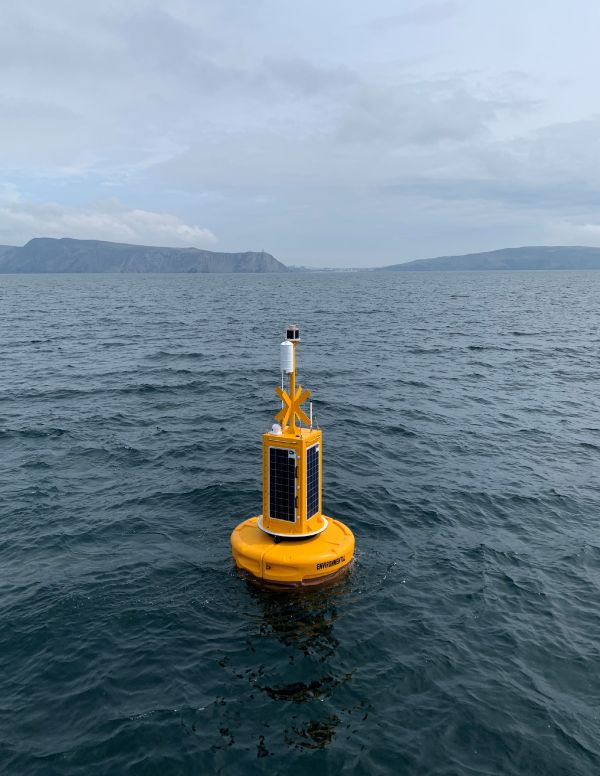A marine monitoring buoy installed off the south of the Isle of Man will help scientists understand the impact of climate change and human activity on Manx waters. Taylor Bridgens, Marine Monitoring Officer with the Department of Environment, Food and Agriculture (DEFA), explains more:
Marine monitoring in Manx waters dates back to 1904 and is one of the longest and most respected time-series of various marine parameters in Europe. Having a dataset that is over a hundred years old and as detailed as ours is like gold dust. Our long-term datasets have the ability to provide global insights on the impacts of climate change, in addition to providing crucial information on the status of Manx waters within the wider Irish Sea.
In 1954, marine monitoring conducted by the Port Erin Marine Laboratory ventured outside of Port Erin Bay to a site roughly two nautical miles off the coast of Bradda Head called Cypris. This site was visited roughly once a week by scientists at the Marine Laboratory, where they collected temperature, salinity, dissolved oxygen and nutrient data. Following the closure of the Port Erin Marine Laboratory in 2006, the Government Laboratory took over the marine monitoring at Cypris, collecting data at monthly intervals.
This month, DEFA’s Environmental Protection Unit (EPU), with the help of the Department of Infrastructure, deployed a marine monitoring buoy at the Cypris site. This buoy is fully autonomous with a variety of sensors that uploaded publicly available data in real time.
This is a massive step forward for marine monitoring on the Isle of Man, as data is being collected round the clock and there is no need to rely on good weather conditions to access the site. The buoy monitors for temperature, salinity, conductivity, pH, turbidity, dissolved oxygen, chlorophyll, the partial pressure of carbon dioxide, and wave height/direction.

The marine environment is facing a multitude of threats and strain on its resources due to anthropogenic stressors (environmental change caused either directly or indirectly by human activity) and the ever-expanding impacts of climate change.
It is now more important than ever to monitor the Manx marine environment to better understand and address the impact climate change is having on our waters. Sea surface temperatures on the Isle of Man have been increasing since monitoring began in 1904, the most significant rate of increase has been within the last 30 years, which is consistent with global trends of rising ocean temperatures (see chart below).
The marine monitoring buoy located at the historic Cypris site allows for trends to be easily seen between current data and data collected decades ago. The deployment of this buoy will collect important environmental data that is vital to identify changes in the marine environment and resultantly provide scientific advice on the protection and management of our marine ecosystem. The data collected at the Cypris site will feed into databases of regional partners and international scientific institutions, thus enabling the Isle of Man to contribute to a wider scientific community.

Sea surface temperature in Port Erin bay from 1904 to 2014. The most significant rate of increase can be seen within the last 30 years
The deployment of the marine monitoring buoy is one of the many initiatives that the EPU is taking to monitor Manx waters to provide crucial data to support the protection, productivity and resilience of the Isle of Man’s territorial sea.
Other initiative include physical water sampling at the Cypris site, which will be collected every two weeks for phytoplankton, zooplankton and nutrient analysis, in addition to monitoring various parameters in Port Erin Bay and the monitoring of hazardous substances in waters surrounding the Island.
For more information on the monitoring that EPU is conducting and to access the publicly available data from the buoy, please visit our website.



